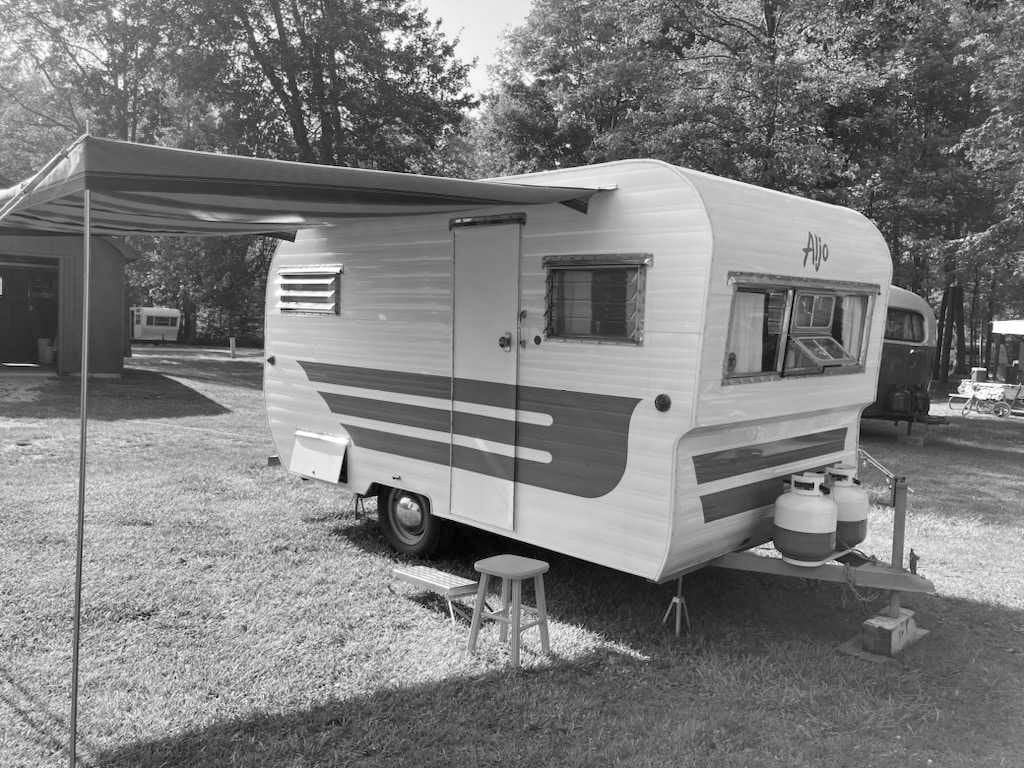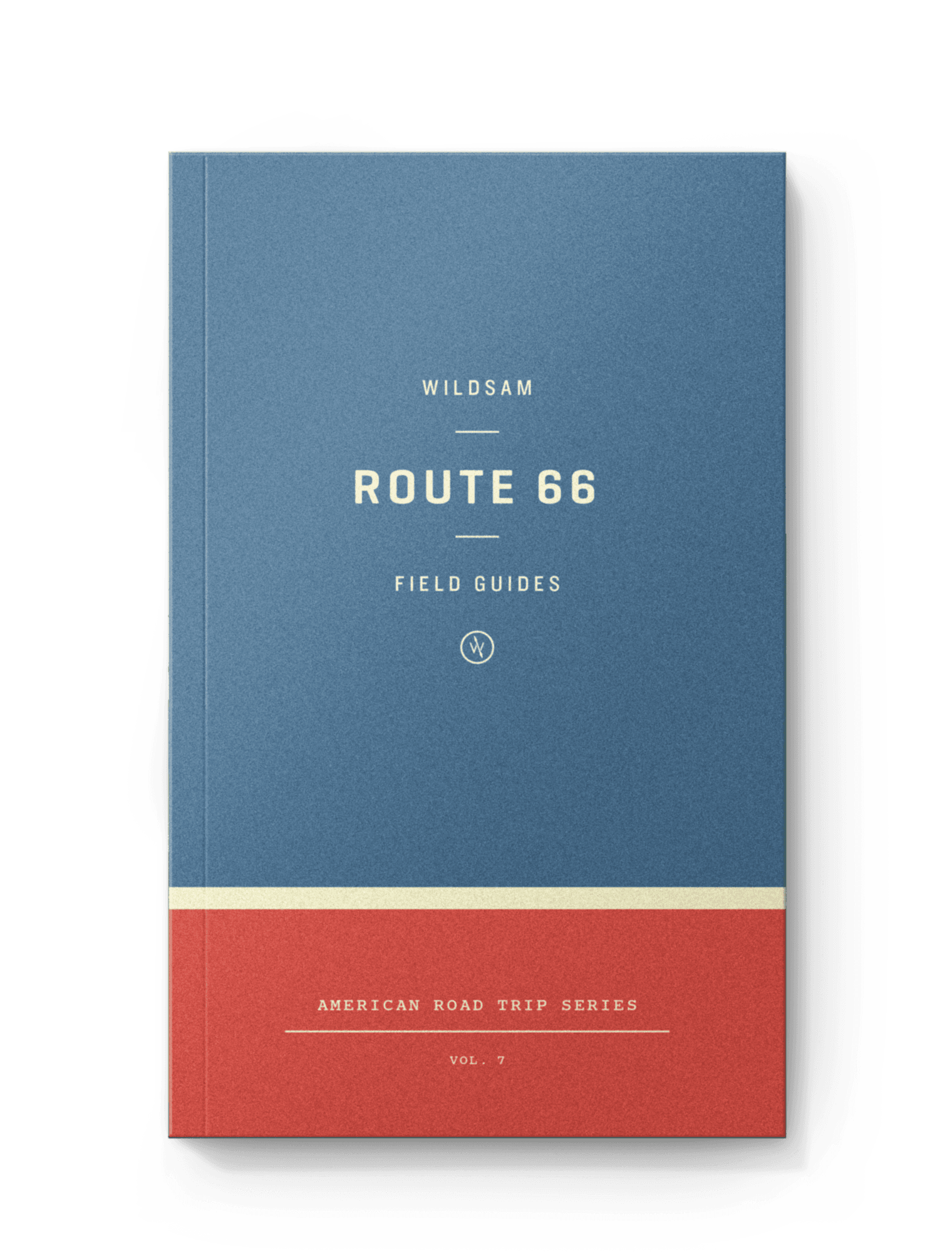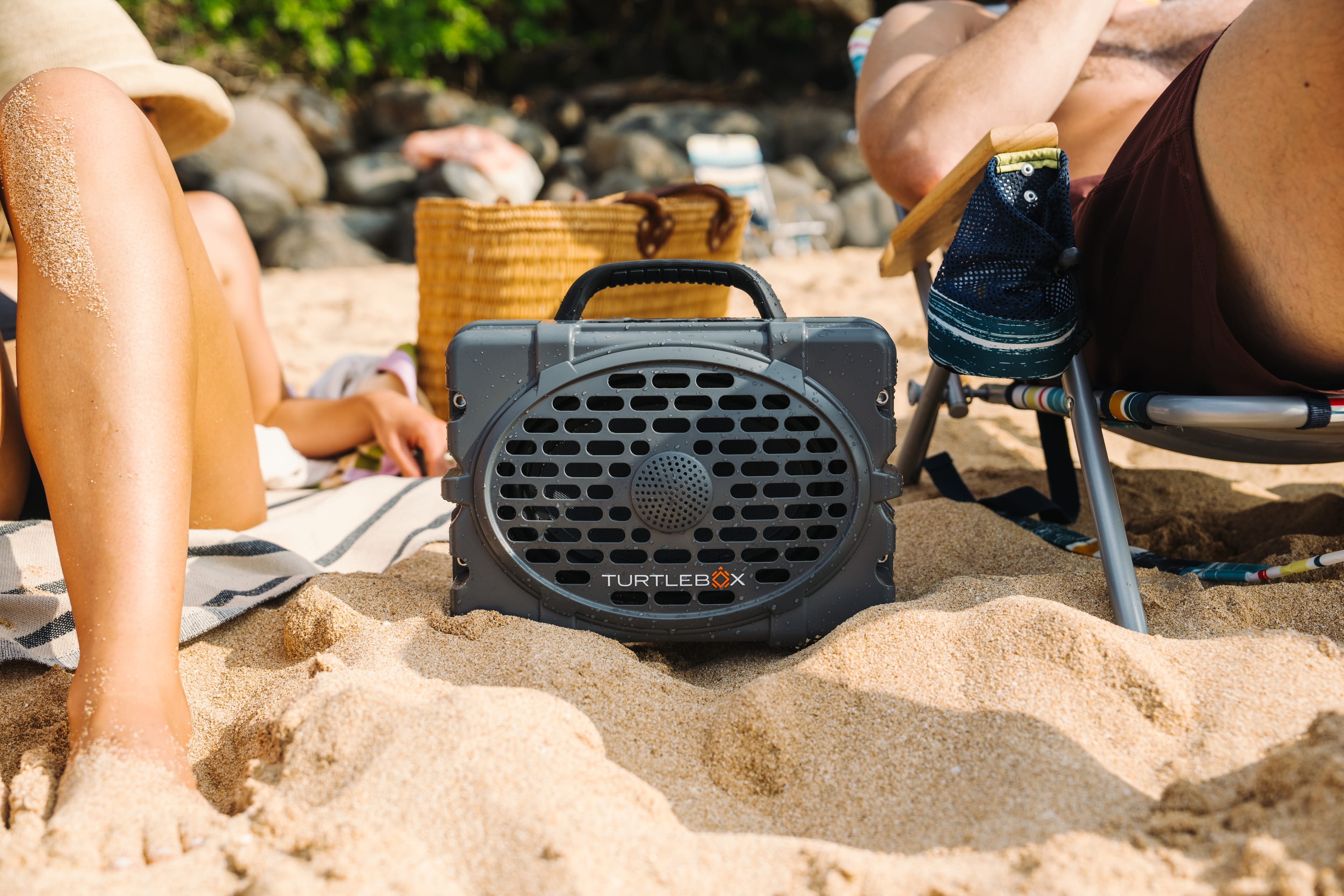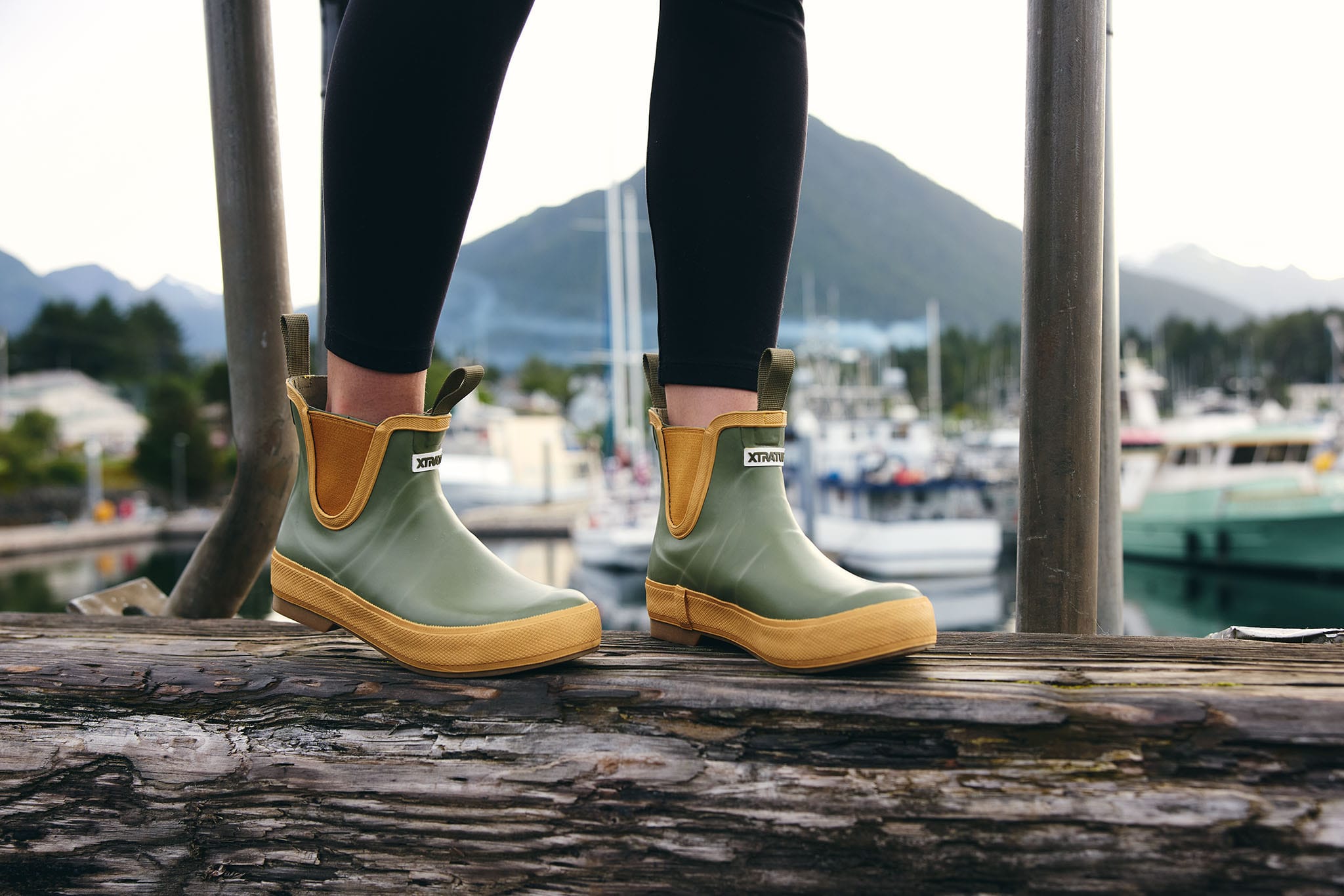The Timeless Aljoa Sportsman

BARRY KOLE
Why Aljoa (or is it Aljo?) trailers remain coveted tin-can classics.
C.T. “MAC” MCCREARY, owner of Modernistic Industries, debuted Aljoa Sportsman trailers in 1945. His timing was auspicious. America’s love affair with the road was about to bloom as World War II drew to an end. New highways—soon enough, interstates—would roll across the landscape. Factories were about to flip from wartime production to serving a booming middle class. Veterans returned home, ready to follow their bliss, or at least go camping.
It was in this era that the Aljoa travel trailer, among the first “canned ham”-style rigs, hit showroom floors across California. (Its profile resembled, quite literally, ham sold in an aluminum can.) The trailer initially came in three lengths (12, 14 and 16 feet), and had a bold, comet-inspired design painted along the side. The interior featured birchwood paneling, a double bed over which a hammock could hang and dinette seats that converted into another sleeping area. By the mid-1950s, Aljoa was the second-largest trailer brand in the nation, according to The Illustrated Field Guide to Vintage Trailers.
Route 66
Field Guide
Experience Route 66 with our Field Guide full of roadside attractions, pie pit stops, motor lodges and more.

As Aljoa’s popularity soared, though, the Alcoa aluminum company sued for copyright infringement, arguing that “Aljoa” hit too close to home for a brand also dealing in shiny metal. In 1956, McCreary dropped the “a,” and the Aljo trailer was born. The rebranded rigs remained popular until McCreary sold to Skyline Industries in 1978. Aljo officially disappeared in 2016—but Aljoas and Aljos are still found across the country.
Deborah Maddock of Kingsburg, California was attending vintage trailer rallies even before she picked up a 1950 Aljoa several years ago. The more Aljoas she saw, the more she was drawn to the design, and after purchasing her own she hit the road, linking up with other Aljoa and Aljo owners. “Every large rally I’m at, there are a handful of others, but I’ve never seen one older than mine,” she says. “It’s a strong community. We don’t have a secret handshake yet. But we know each other.”
That community is only growing, says Dave Ghering, who has restored several vintage trailers, including a 1956 Aljo and a 1955 Aljoa, which his 102-year-old mother-in-law bought off a showroom floor nearly 70 years ago. “There’s a lot more of those trailers out there now than when I finished restoring my first one in 2010,” he says. “People are finding them. It’s like owning a classic car.”
But it’s not purely about nostalgia at this point according to Barry Cole, proud New Jersey-based owner of a 1959 Aljo. “It’s easy to use,” he says. “It’s easy to trailer behind cars. It has nice features and quality materials.” Plus, he says: “It does turn some heads.”




